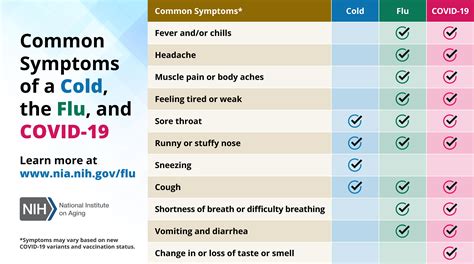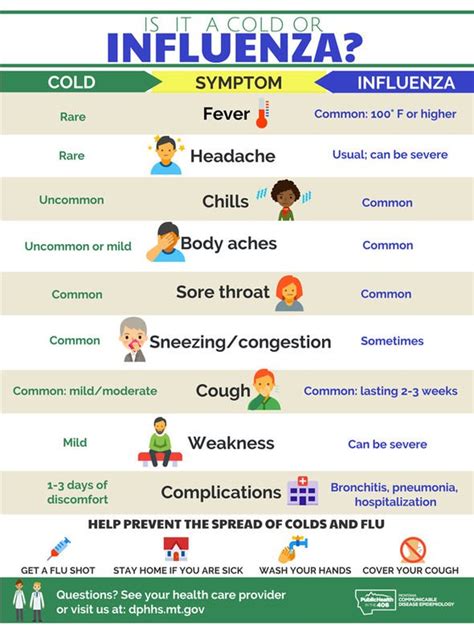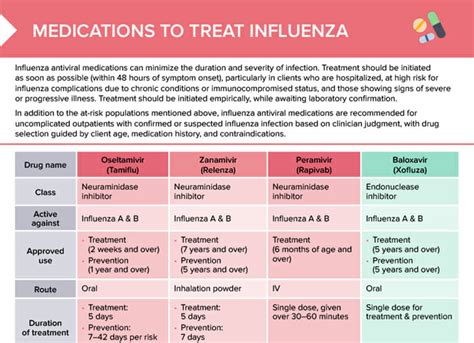Intro
Identify 7 key influenza symptoms, including fever, cough, and fatigue, to recognize the flu virus and seek timely treatment, alleviating respiratory issues and preventing complications.
Influenza, commonly known as the flu, is a highly contagious respiratory illness caused by the influenza virus. It affects millions of people worldwide each year, leading to significant morbidity and mortality. Understanding the symptoms of influenza is crucial for early diagnosis, treatment, and prevention of complications. The flu can have a substantial impact on individuals, families, and communities, making it essential to recognize its symptoms and take prompt action.
The flu season typically runs from October to May, with peak activity occurring between December and February. During this time, the virus spreads rapidly, especially in crowded areas like schools, offices, and public transportation. Influenza can affect anyone, but certain groups, such as older adults, young children, and people with underlying health conditions, are more susceptible to severe illness. Recognizing the symptoms of influenza is vital for seeking medical attention and preventing serious complications.
Influenza symptoms can range from mild to severe and may resemble those of other respiratory illnesses. However, there are distinct characteristics of the flu that set it apart from other conditions. The symptoms of influenza can be divided into two categories: common and severe. Common symptoms include fever, cough, sore throat, runny or stuffy nose, headache, fatigue, and muscle or body aches. Severe symptoms, which may indicate a more serious illness, include difficulty breathing, chest pain, severe headache, confusion, and severe vomiting.
Influenza Symptoms Overview

Common Influenza Symptoms
The most common symptoms of influenza include: * Fever: A high temperature, usually above 102°F (39°C), which can last for three to four days. * Cough: A dry, hacking cough that can be severe and persistent. * Sore throat: Pain and inflammation in the throat, which can make swallowing uncomfortable. * Runny or stuffy nose: Excess mucus production, leading to a runny or congested nose. * Headache: A severe headache, often accompanied by fatigue and muscle aches. * Fatigue: Feeling extremely tired, weak, and lacking energy. * Muscle or body aches: Pain and stiffness in the muscles, back, and other parts of the body.Severe Influenza Symptoms

Influenza Complications
Influenza can lead to various complications, especially in high-risk individuals. These complications include: * Pneumonia: A bacterial or viral infection that inflames the lungs and can be life-threatening. * Bronchitis: Inflammation of the bronchial tubes, which can cause coughing, wheezing, and shortness of breath. * Sinus and ear infections: Bacterial or viral infections that can cause pain, congestion, and discharge. * Dehydration: Excessive fluid loss, which can lead to electrolyte imbalances and other complications.Influenza Diagnosis and Treatment

Influenza Prevention
Preventing influenza is crucial to reducing the risk of illness and complications. The most effective way to prevent influenza is through vaccination. The flu vaccine is available in various forms, including injectable and nasal spray vaccines. Other preventive measures include: * Practicing good hygiene: Washing your hands frequently, covering your mouth and nose when coughing or sneezing, and avoiding close contact with people who are sick. * Avoiding crowded areas: Staying away from crowded areas, such as schools, offices, and public transportation, especially during peak flu season. * Staying healthy: Engaging in regular exercise, eating a balanced diet, and getting enough sleep to keep your immune system strong.Influenza Vaccine

Influenza Vaccine Side Effects
The influenza vaccine is generally safe and well-tolerated. Common side effects include: * Soreness, redness, or swelling at the injection site * Low-grade fever * Headache * Fatigue * Muscle or joint painInfluenza Treatment Options

Influenza Home Remedies
In addition to medical treatment, there are several home remedies that can help alleviate influenza symptoms. These include: * Staying hydrated: Drinking plenty of fluids, such as water, clear broths, and electrolyte-rich beverages. * Resting: Getting plenty of rest to help your body fight off the infection. * Using a humidifier: Adding moisture to the air to help relieve congestion and cough. * Practicing good hygiene: Washing your hands frequently, covering your mouth and nose when coughing or sneezing, and avoiding close contact with people who are sick.What are the common symptoms of influenza?
+The common symptoms of influenza include fever, cough, sore throat, runny or stuffy nose, headache, fatigue, and muscle or body aches.
How is influenza diagnosed?
+Influenza diagnosis is typically based on physical examination, medical history, and laboratory tests.
What are the treatment options for influenza?
+Treatment options for influenza include antiviral medications, over-the-counter medications, and home remedies.
How can I prevent influenza?
+The most effective way to prevent influenza is through vaccination. Other preventive measures include practicing good hygiene, avoiding crowded areas, and staying healthy.
What are the side effects of the influenza vaccine?
+Common side effects of the influenza vaccine include soreness, redness, or swelling at the injection site, low-grade fever, headache, fatigue, and muscle or joint pain.
In conclusion, understanding the symptoms of influenza is crucial for early diagnosis, treatment, and prevention of complications. By recognizing the common and severe symptoms of influenza, individuals can seek medical attention and take prompt action to alleviate their symptoms and prevent serious illness. Remember to get vaccinated, practice good hygiene, and stay healthy to reduce your risk of getting influenza. If you have any questions or concerns about influenza, please don't hesitate to comment below or share this article with your friends and family.
